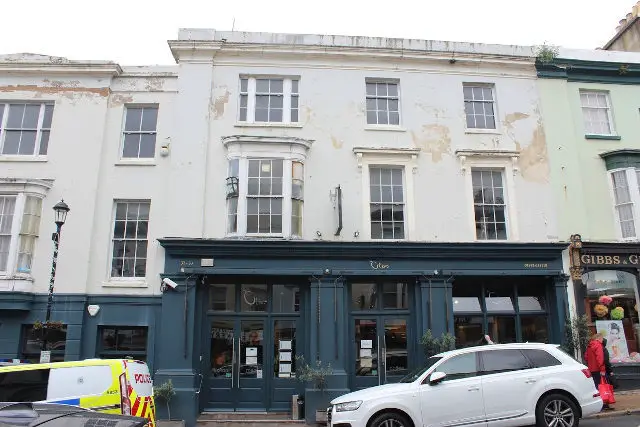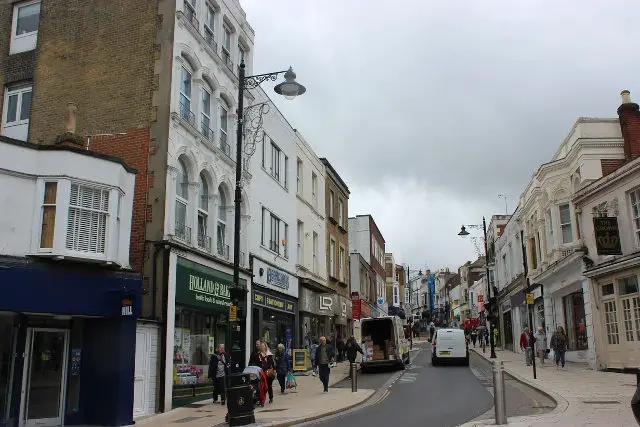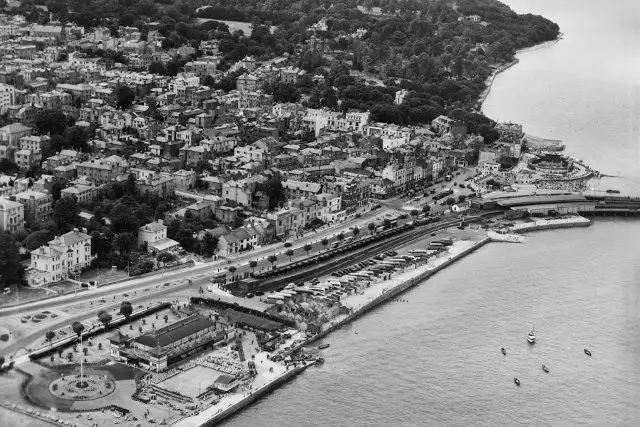Historic England’s Heritage at Risk Register 2019 is published today (Thursday, 17th October 2019), the annual snapshot of the critical health of England’s most valued historic places, and those most at risk of being lost as a result of neglect, decay or inappropriate development.
Sandown and Ryde see their Conservation Areas being added to the At Risk Register – a move that should help secure their future.
Ryde Conservation Area
Ryde started to develop in the 18th century as a key point of arrival for visitors to the Isle of Wight, but from the 1840s it was transformed into a fashionable resort for wealthy Victorians, graced by Queen Victoria and Prince Albert.

It boasts a seafront of imposing Victorian hotels with a pier and promenade, garden spaces and pavilion. However, the town centre and seafront have been declining over the years, with the east beach lost to car parks and a marina and the sea front cut off from the town by busy roads.
The bus station marshalling yard also obstructs people’s enjoyment of the seafront. The decline of town centre shop fronts, vacant buildings and poor maintenance of buildings on the High Street have contributed to it being added to the ‘Register. There are also a number of larger vacant buildings, including the former Town Hall and Art-deco Royal York Hotel.

Ryde Town Council, in partnership with Ryde Business Association and Isle of Wight Council has qualified for High Street Heritage Action Zone status.
Sandown Conservation Area
Sandown first became popular for excursions in the late 18th century, but grew to a small town that was regarded as a “charming locality for marine villas and sea bathing”, also boasting hotels and ”well stocked shops”.
Developed to take advantage of views over the shoreline and sea, the introduction of rail transport linking it with Ryde spurred rapid growth as a holiday resort accessible from London and Midlands.

The six boarding houses advertised in 1855 had risen to 64 by 1875. The town gained its pier in 1879 and other resort buildings were added in the early and mid- 20th century – the heyday of the English seaside holiday. The conservation area contains the core of the Victorian resort including the commercial high street and esplanade, as well as the earliest suburban streets.
The conservation area is at risk due to a mixture of the vacancy and dereliction of buildings and land on the seafront. Other problems include street clutter, poor signage, run-down shop fronts, lack of maintenance of buildings and intrusive advertising.
Historic England will work with Isle of Wight Council to develop plans to address these issues.
Gee: Bringing buildings back to beneficial use
Emily Gee, Historic England Regional Director for London and the South East said:
“Our heritage needs to be saved and investing in heritage pays. It helps to transform the places where we live and work and in which we visit, creating successful and distinctive places for us and for future generations to enjoy. But there’s more work to do.
“There are buildings still on the Heritage at Risk Register such as the Haslar Guard Houses in Gosport in Hampshire and Bouldnor Battery near Yarmouth on the Isle of Wight that can be rescued and brought back to beneficial use. These are the homes, shops, offices and cultural places of the future.
“Historic England’s experience shows that with the right partners, imaginative thinking and robust business planning, we can be confident in finding creative solutions for these complex sites.”
Listing secures future
Across the South East, 21 sites have been removed from the Register in 2019 because their future has been secured, often by community intervention, while ten sites have been added because of concerns about their condition. Historic England has spent £1,509,603 in grants in London and the South East over the past year, helping to save some of our most important historic sites.
The Register
The Heritage at Risk Register 2019 reveals that in the South East, there are 156 Grade I and II* buildings, 142 scheduled monuments, 82 places of worship, 25 registered parks and gardens, three protected wreck sites and 65 conservation areas that are at risk of neglect, decay or inappropriate change.
In total, there are 473 entries on the Register in the South East, 11 fewer than in 2018.
Image: © Historic England Archive. Aerofilms Collection





